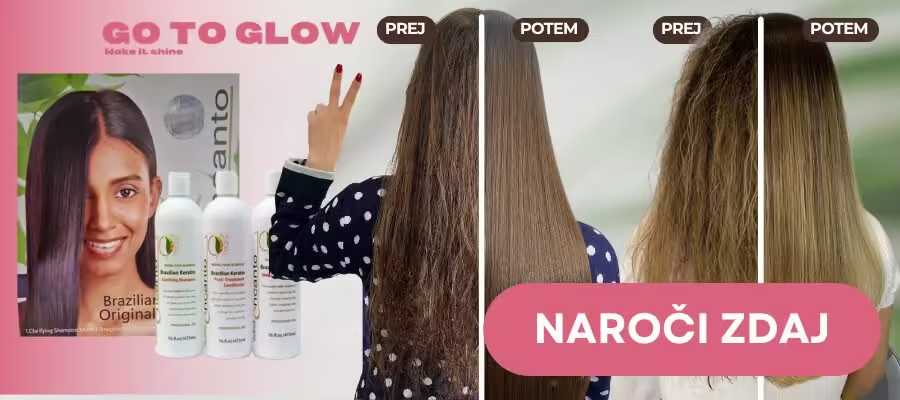Brazilian keratin has become a very popular hair treatment promising smooth, shiny, and more manageable hair. However, some consumers are concerned about potentially harmful chemicals that may be present in some keratin treatments. In this article, we will explore which chemicals are commonly used in Brazilian keratin, what their risks are, and how you can choose safe and effective products.
Which chemicals are used in keratin treatments?
- Formaldehyde: One of the most controversial chemicals in keratin treatments is formaldehyde. This chemical is used as a preservative and to seal the keratin in the hair, providing long-lasting results. However, formaldehyde is known as a strong irritant and is associated with several health risks.
- Methylene glycol: Methylene glycol is a chemical commonly used as an alternative to formaldehyde. However, when heated, it converts to formaldehyde, meaning the product carries the same risks as those directly containing formaldehyde.
Order Brazilian keratin treatment set without Formaldehyde or Methylene Glycol:

Risks of formaldehyde and related chemicals
- Skin, eye, and respiratory irritation: Formaldehyde is a strong irritant that can cause redness, itching, and tearing of the eyes, irritation of the nose and throat, and coughing. Prolonged exposure can also lead to more serious health issues, such as asthma and other respiratory diseases.
- Carcinogenicity: The International Agency for Research on Cancer (IARC) has classified formaldehyde as a carcinogen for humans. Long-term exposure to high levels of formaldehyde is associated with an increased risk of developing nasal and throat cancer.
- Allergic reactions: Some people may be allergic to formaldehyde, which can cause severe skin reactions, including rashes, itching, and swelling.
How to choose safe keratin treatments?
- Check the ingredients: Before purchasing a keratin treatment, carefully read the list of ingredients. Avoid products containing formaldehyde, methylene glycol, or other formaldehyde releasers. Look for products that contain safer alternatives, such as glyoxylic acid.
- Look for certifications: Products certified by recognized organizations, such as the FDA or European regulatory agencies, are likely safer. These organizations set strict standards for product safety and efficacy.
- Read user reviews: User reviews can provide insight into the effectiveness and safety of a product. Look for reviews from people who have used the product for an extended period to get a better understanding of long-term effects.
Alternatives to formaldehyde in keratin treatments
- Glyoxylic acid: Glyoxylic acid is an alternative to formaldehyde that works in a similar way but does not produce formaldehyde. This chemical smooths the hair and reduces curling, but further research is needed to fully understand its long-term effects.
- Cysteine: Cysteine is an amino acid used in some keratin treatments as a safer alternative to formaldehyde. It works to smooth the hair and make it more manageable without the use of aggressive chemicals.
- Formaldehyde-free keratin: There are keratin treatments available on the market that do not contain formaldehyde or its derivatives. These products use other ingredients to achieve smoothness and shine in the hair, but may not provide as long-lasting results as traditional keratin treatments.
Order Brazilian keratin set without formaldehyde: https://gotoglow.cz/izdelek/brazilski-keratin-encanto-komplet-3x-100ml/
Proper hair care after keratin treatment
To prolong the results of a keratin treatment and maintain hair health, it is important to follow some basic principles of hair care after the treatment.
- Use sulfate-free shampoos and conditioners: Sulfates can strip keratin from the hair, so it is important to use sulfate-free shampoos and conditioners. This will help maintain the smoothness and shine of the hair.
- Avoid frequent hair washing: Washing hair can wash out keratin, so try to wash your hair less frequently. Dry shampoos can be a great alternative to refresh hair between washes.
- Use heat protection: If using heat styling tools, always use heat protection to protect the hair from damage.
- Avoid pools and seawater: Chlorine in pools and salt in seawater can rinse keratin out of the hair, so it is recommended to wear a swim cap or avoid getting hair wet in water.
Conclusion
Brazilian keratin can be an excellent solution for smooth and shiny hair, but it is important to choose products without harmful chemicals like formaldehyde. Check the ingredients, look for certifications, and read user reviews to select the best products for your hair. With proper post-treatment care, you can enjoy long-term results and healthy hair.
Sources
- Healthline – Brazilian Keratin Treatment: What You Need to Know
- FDA – Hair Smoothing Products That Release Formaldehyde
- Environmental Working Group – Keratin Treatments
- International Agency for Research on Cancer – Formaldehyde
- Harvard Health – The Risks of Keratin Treatments
- Cruelty Free International – Hair Straightening and Smoothing
- Verywell Health – Formaldehyde Allergies
- Allure – Alternatives to Formaldehyde in Keratin Treatments
- Cosmopolitan – The Best Sulfate-Free Shampoos
